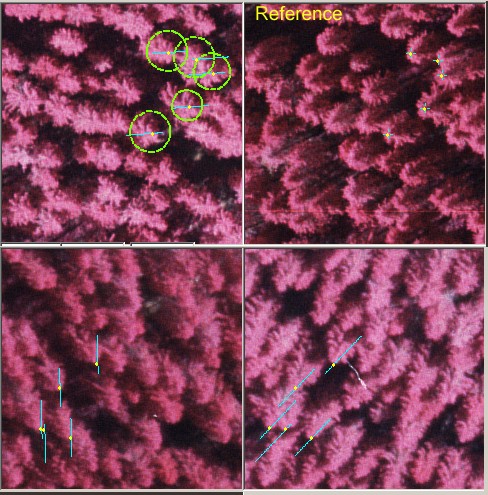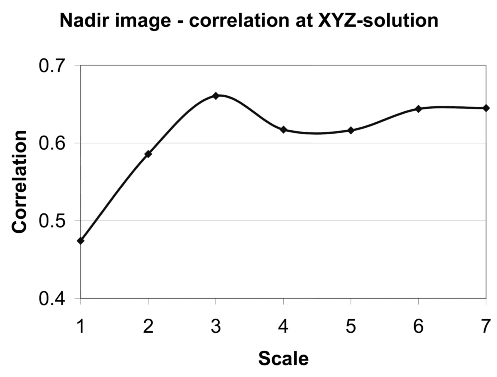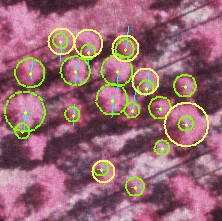After the treetop solution is obtained, the optimum scale is found from the view that has the least oblique viewing angle. These views are best for the determination of crown width (Mäkinen et al. 2006, CJFR). Multi-scale template matching is used for that with the exception that the treetop image position is allowed to take values in the neighborhood (image window) of the solution. The crown width of the model tree is multiplied by the scale factor (e.g. 0.8) to give a crown diameter (Dcrm) estimate. Hence, there can only be as many values for Dcrm as there are scales (Fig 2).

Back to index,
Next

Fig 2. Here the optimal scale is 3 (0.7 of the model tree's Dcrm). The correlation has a flat maximum - typical - and an indication of the unreliability of the method. Noise (varying backgroung, varying crown shapes, partial occlusion) in the images is the main source of uncertainty.

Fig. 3. The method was tried here in a rather
sparse pine stand (30 x 30 m) on barren CT (Calluna vulgaris) -site (sandy
glacial delta). The yellow circles are set by an operator - and they give
an idea that gross errors (underestimation) is possible and common. The method
needs improvement.